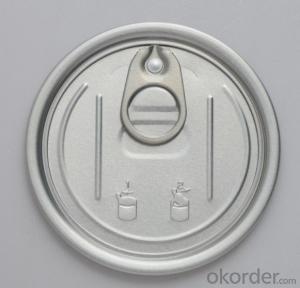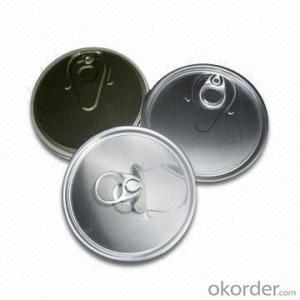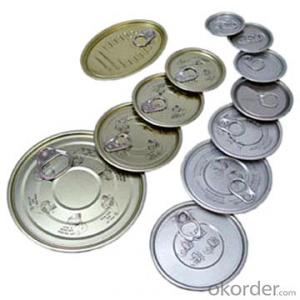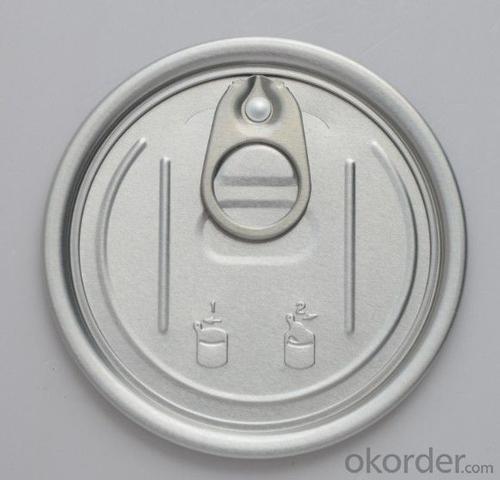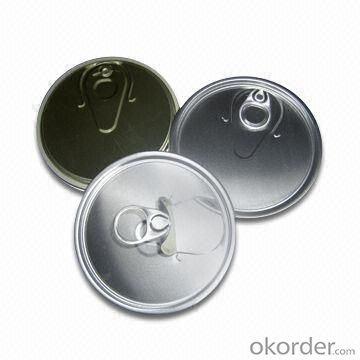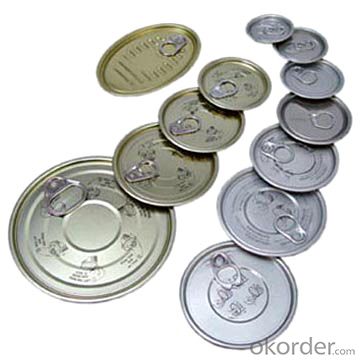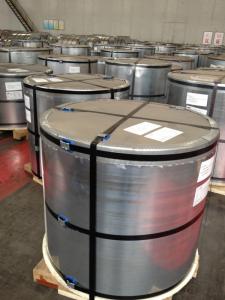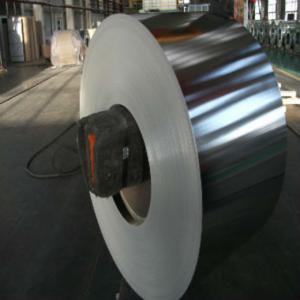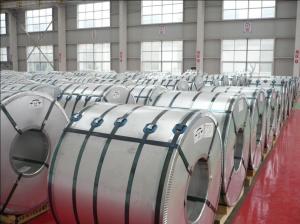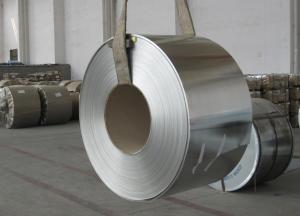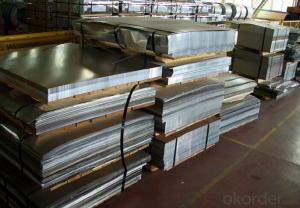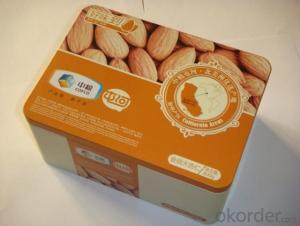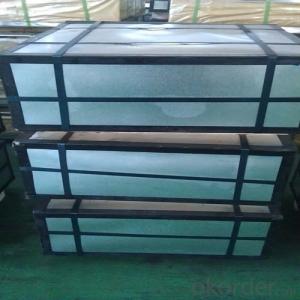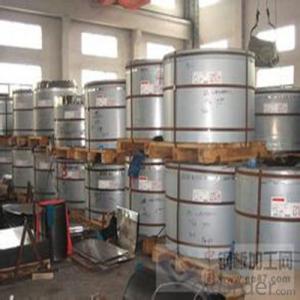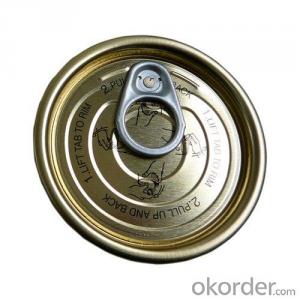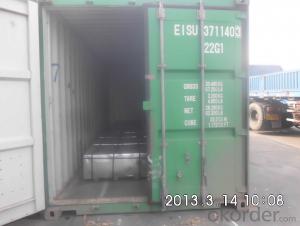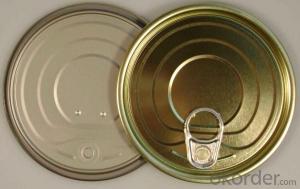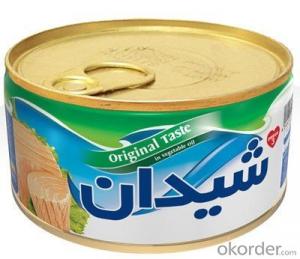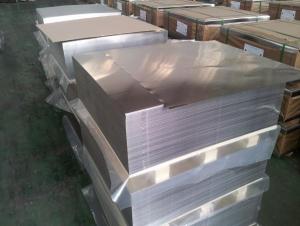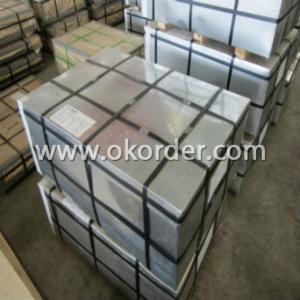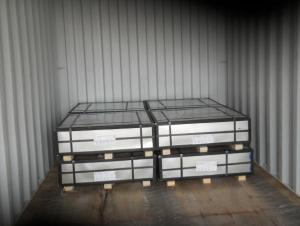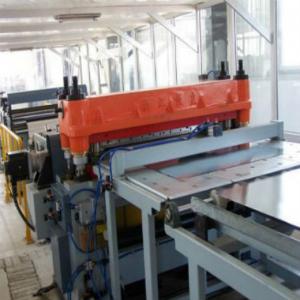Easy Open End, Aluminum Dry Food Can Lid 401#,Best Quality
- Loading Port:
- China main port
- Payment Terms:
- TT OR LC
- Min Order Qty:
- 1050000 pc
- Supply Capability:
- 100000000 pc/month
OKorder Service Pledge
OKorder Financial Service
You Might Also Like
Specification
Specifications
Shape/type | Round |
Size(mm) | Dia 98.9 |
Coating | Clear inside & outside |
Material | Aluminum |
Pcs/20 GP’ | 1,050,000 Customize packing: as clients’ requests. |
Features | 1.Have saferim. 2.Used for packaging of dry cargo,such as milk powder,coffe powder,condiment,tea,walnat meat,chicken essence,etc. 3.Have embossed illustration. 4.Coating can be according to customer required.
|
Our Workshop
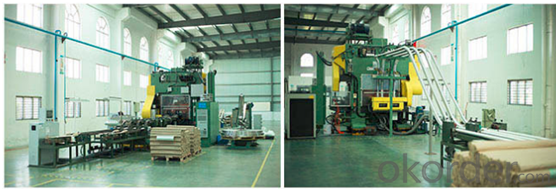
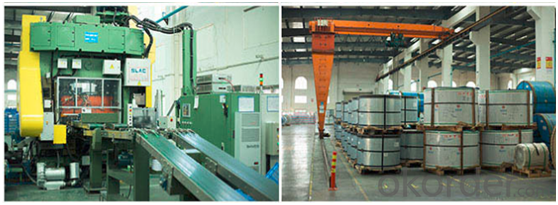
Our packing
We could offer package as customers require, by carton or by wooden pallet.
FAQ
1.Q: What is the material of EOE?
We can offer both tinplate and aluminum material made EOE upon customer request;
2. Q: What’s the usage of EOE?
It mainly be used in food area, such as milk powder, dry food, drink etc.
2.Q:Whether sample is available for testing?
Surely we could offer about 200~300 pcs for testing;
3. Q: Please give more details about your company
Our company, CNBM International Corporation, is one large state owned company also Fortune Global 500 company in the world. For more details please search our company website.
4.What’s the loading port?
Main Port in China
- Q: How does tinplate perform in terms of gas barrier properties?
- Tinplate exhibits excellent gas barrier properties, making it an effective material for packaging perishable goods and preventing the ingress of oxygen, moisture, and other gases.
- Q: How is tinplate coated with organic materials for specific applications?
- Tinplate is coated with organic materials for specific applications through a process known as lacquering. Lacquering involves applying a thin layer of organic material, such as a resin or polymer, onto the surface of the tinplate. This coating provides protection against corrosion, enhances the aesthetic appearance, and improves the adhesion of inks or paints for printing or labeling purposes. The organic coating can be applied through various methods like roll coating, spray coating, or electrostatic deposition, depending on the specific requirements of the application.
- Q: What are the common defects in tinplate?
- Common defects in tinplate include rusting, dents, scratches, pinholes, and uneven coating.
- Q: What are the different printing techniques used on tinplate?
- There are several different printing techniques used on tinplate, including lithography, offset printing, screen printing, and digital printing. These methods allow for high-quality and vibrant designs to be applied to tinplate surfaces, making them suitable for various packaging and promotional materials.
- Q: How does tinplate packaging withstand extreme temperatures?
- Tinplate packaging withstands extreme temperatures due to its inherent properties such as high melting point and excellent heat conductivity. Additionally, the tin coating on the steel sheet acts as a protective barrier, preventing the metal from corroding or warping under extreme temperature conditions.
- Q: Can tinplate be used for solar panel applications?
- Yes, tinplate can be used for solar panel applications. Tinplate is commonly used as a substrate material for the backsheet of solar panels due to its excellent corrosion resistance, durability, and ability to protect the solar cells from environmental factors.
- Q: What are the main regulations governing tinplate recycling?
- The main regulations governing tinplate recycling vary by country and region. However, some common regulations include waste management laws, recycling targets, and regulations regarding the collection, sorting, and processing of tinplate materials. These regulations aim to promote the proper disposal and recycling of tinplate, ensuring environmental sustainability and resource conservation.
- Q: How is tinplate stored and transported?
- Tinplate is typically stored and transported in rolls or sheets. It is commonly packaged in coils and secured with strapping or wrapping to prevent damage during transportation. These coils or sheets are then loaded onto trucks, ships, or trains for distribution to manufacturers and consumers. Additionally, proper handling and storage conditions are crucial to maintain the quality of tinplate, such as protecting it from moisture, extreme temperatures, and physical impact.
- Q: What are the common forms of corrosion that affect tinplate?
- The common forms of corrosion that affect tinplate include tin oxide corrosion, tin pest, and electrochemical corrosion.
- Q: What are the main quality standards for tinplate?
- The main quality standards for tinplate include thickness, coating weight, surface finish, and adhesion. These standards ensure that tinplate meets the required strength, corrosion resistance, and aesthetic properties necessary for its various applications such as food packaging and industrial uses.
Send your message to us
Easy Open End, Aluminum Dry Food Can Lid 401#,Best Quality
- Loading Port:
- China main port
- Payment Terms:
- TT OR LC
- Min Order Qty:
- 1050000 pc
- Supply Capability:
- 100000000 pc/month
OKorder Service Pledge
OKorder Financial Service
Similar products
Hot products
Hot Searches
Related keywords
